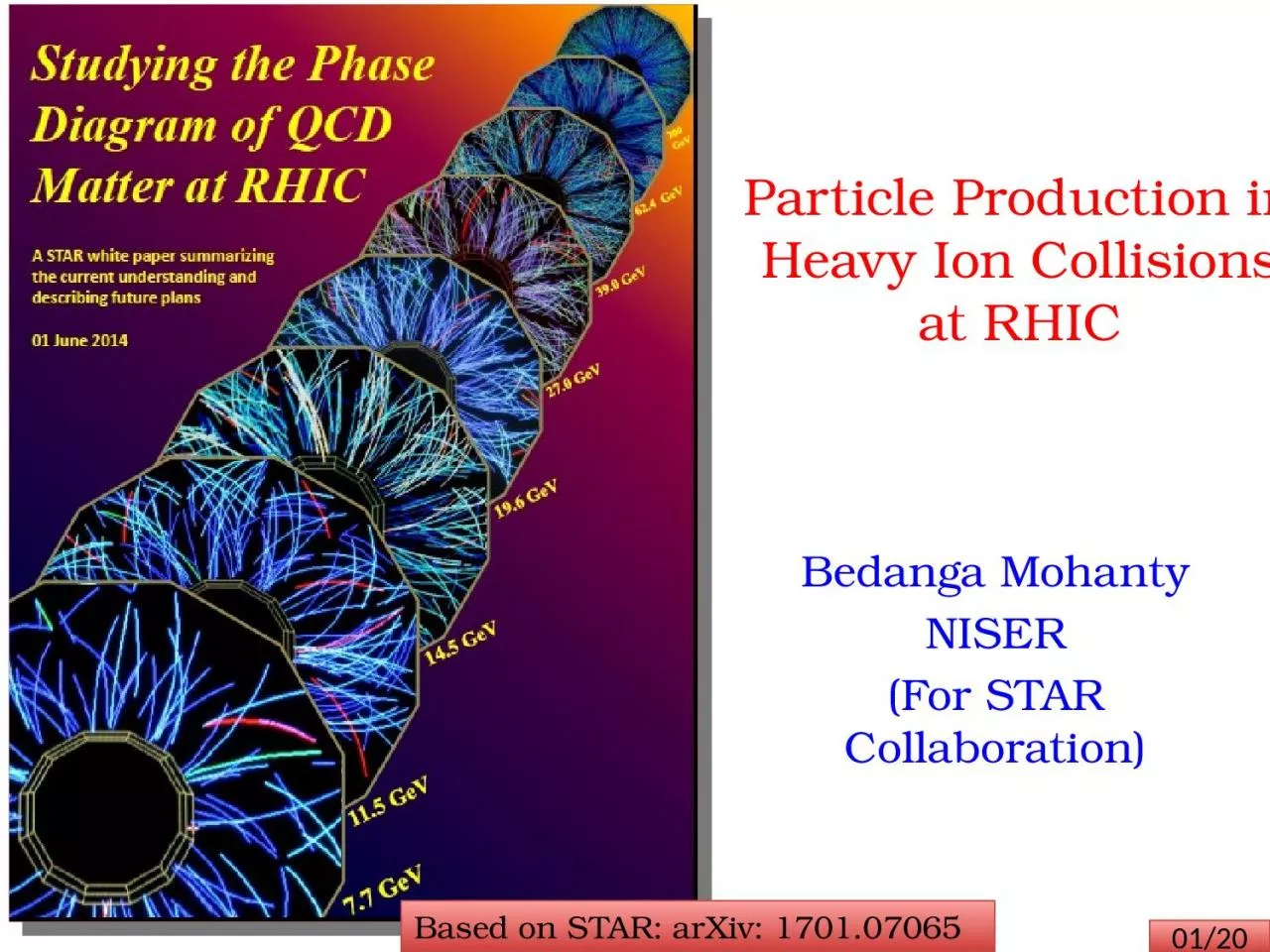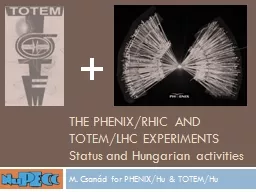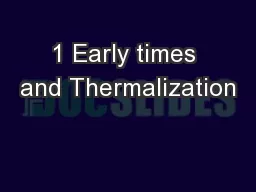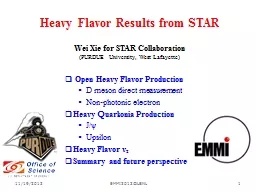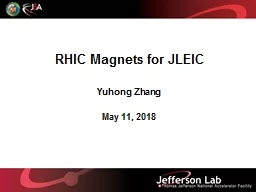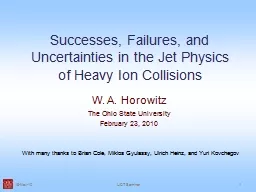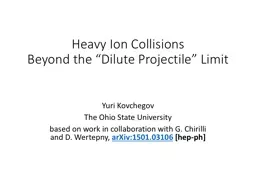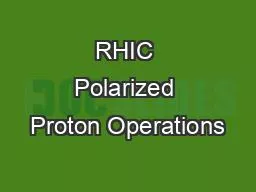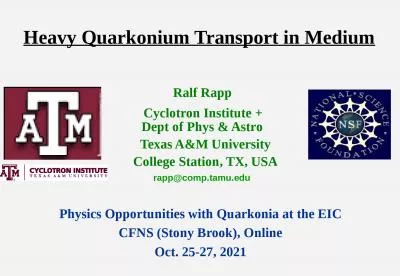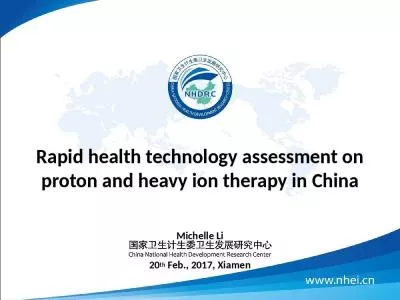PPT-Particle Production in Heavy Ion Collisions at RHIC
Author : hadly | Published Date : 2023-11-05
Bedanga Mohanty NISER For STAR Collaboration Based on STAR arXiv 170107065 0120 Goals of HeavyIon Collision Find out the phase structure of QCD phase d iagram
Presentation Embed Code
Download Presentation
Download Presentation The PPT/PDF document "Particle Production in Heavy Ion Collisi..." is the property of its rightful owner. Permission is granted to download and print the materials on this website for personal, non-commercial use only, and to display it on your personal computer provided you do not modify the materials and that you retain all copyright notices contained in the materials. By downloading content from our website, you accept the terms of this agreement.
Particle Production in Heavy Ion Collisions at RHIC: Transcript
Download Rules Of Document
"Particle Production in Heavy Ion Collisions at RHIC"The content belongs to its owner. You may download and print it for personal use, without modification, and keep all copyright notices. By downloading, you agree to these terms.
Related Documents

